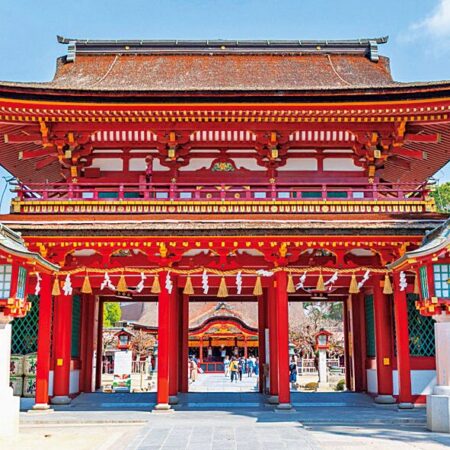Have you ever visited Fushimi Inari in Kyoto? Known for its photogenic scenery, including the famous Senbon Torii and numerous fox statues, it is one of Kyoto's top tourist destinations. Fushimi Inari is the head shrine of all Inari shrines across Japan, which number around 30,000, making it the most familiar Inari shrine to us. How did Fushimi Inari come to be, and why the fox? In this article, we will introduce the history, highlights, and trivia of Fushimi Inari.
The History of Fushimi Inari
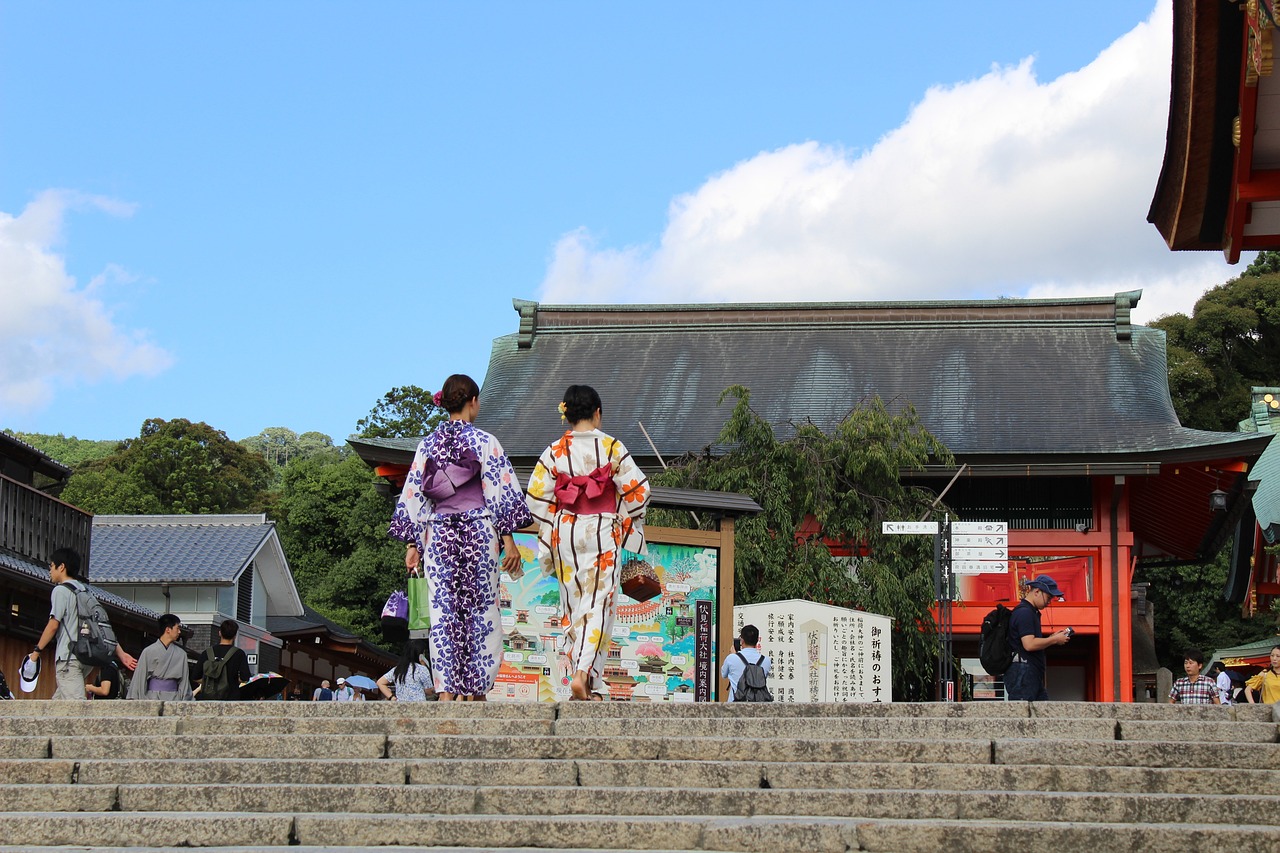
The history of Inari worship began in the spring of the Nara period when a man named Hata no Irogu enshrined a deity on Mount Inari. Hata no Irogu, a member of the Hata clan, were immigrants from the Korean Peninsula who enriched the region with their advanced skills and economic power. Inari worship naturally resonated with people whose lives revolved around rice cultivation, and the Inari deity was revered as the protector of rice and grain.
The reason Irogu enshrined the deity on Mount Inari is rooted in a mystical event. According to legend, when he attempted to use a rice cake as an archery target, the rice cake transformed into a white bird and flew away. The place where the bird landed miraculously sprouted rice plants. Inspired by this miracle, the people built a shrine on that spot and named it "Inari," derived from "Ina-ri," meaning "rice load."
As time progressed into the Heian period, Inari worship further developed. Notably, the great Buddhist monk Kobo Daishi Kukai integrated the Inari deity into Shingon Esoteric Buddhism, associating Inari with Dakiniten, a symbol of prosperity and wish fulfillment. This association broadened the role of the Inari deity from an agricultural god to one that also brought worldly benefits.
However, history is always fraught with challenges. The devastation of Kyoto during the Onin War also affected the Inari shrine. Nonetheless, through the dedicated efforts of Inari Kanjin monks and Inari gyoja (pilgrims), the shrine began its path to recovery from its dire state. They traveled the country, spreading the divine virtues and miraculous powers of the Inari deity, and soliciting donations from believers. These donations facilitated the repair of the shrine buildings and new constructions, allowing the shrine to regain its former glory. Particularly, in 1499, the main hall was reconstructed, and the donation and reconstruction of the Romon gate by Toyotomi Hideyoshi became symbolic events in the shrine's revival.
In the Edo period, Inari worship gained even more popularity, especially flourishing in Edo (present-day Tokyo). During this era, the association of foxes with the Inari deity became widespread, establishing the perception of "fox = Inari deity." Samurai, including daimyo and hatamoto, enshrined Inari as the tutelary deity of their residences, praying for "health and prosperity of descendants," while merchants and townspeople prayed for "prosperity in business." The tradition of donating torii gates at Fushimi Inari Taisha, which began during this period, particularly flourished in the modern era.
By the Meiji period, Inari worship had entered a new phase. Around Fushimi Inari Taisha, the practice of donating stone monuments, known as "otsuka," by devotees expressing their wishes and gratitude became popular. This practice resulted in the dedication of numerous stone monuments on Mount Inari, now numbering over 10,000. These stone monuments contribute to the mystical landscape of Fushimi Inari Taisha, reflecting the depth and diversity of Inari worship.
The Highlights of Fushimi Inari
So far, we have explored the history of Fushimi Inari. Next, let's take a look at the highlights of Fushimi Inari.
Senbon Torii
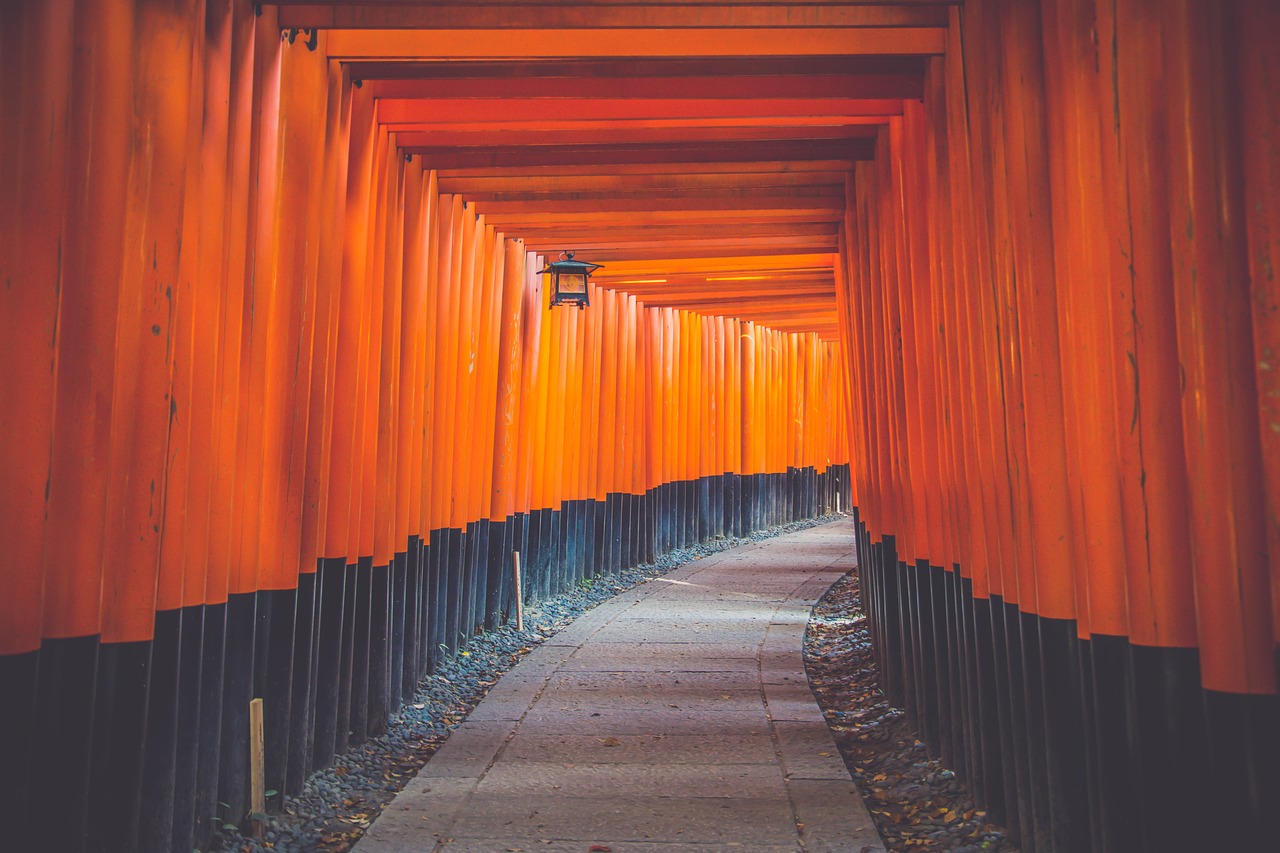
The iconic Senbon Torii at Fushimi Inari Taisha offers visitors an overwhelming and captivating sight. This unique series of torii gates lines the mountain path from the Okumiya to the Okusha Hohaisho, creating a mystical atmosphere that seems to lead to another world. The name "Senbon Torii" comes from the fact that there are countless torii gates, though it does not literally mean 1,000 gates. In fact, there are about 10,000 torii gates throughout Fushimi Inari, with 800 of them in the Senbon Torii section.
All of these torii gates have been donated, a tradition that dates back to the Edo period. People donate the gates as a sign of gratitude for wishes that have been granted or to convey their wishes to the gods. This tradition continues to this day, with many people dedicating torii gates with their wishes and gratitude.
Fox Statue
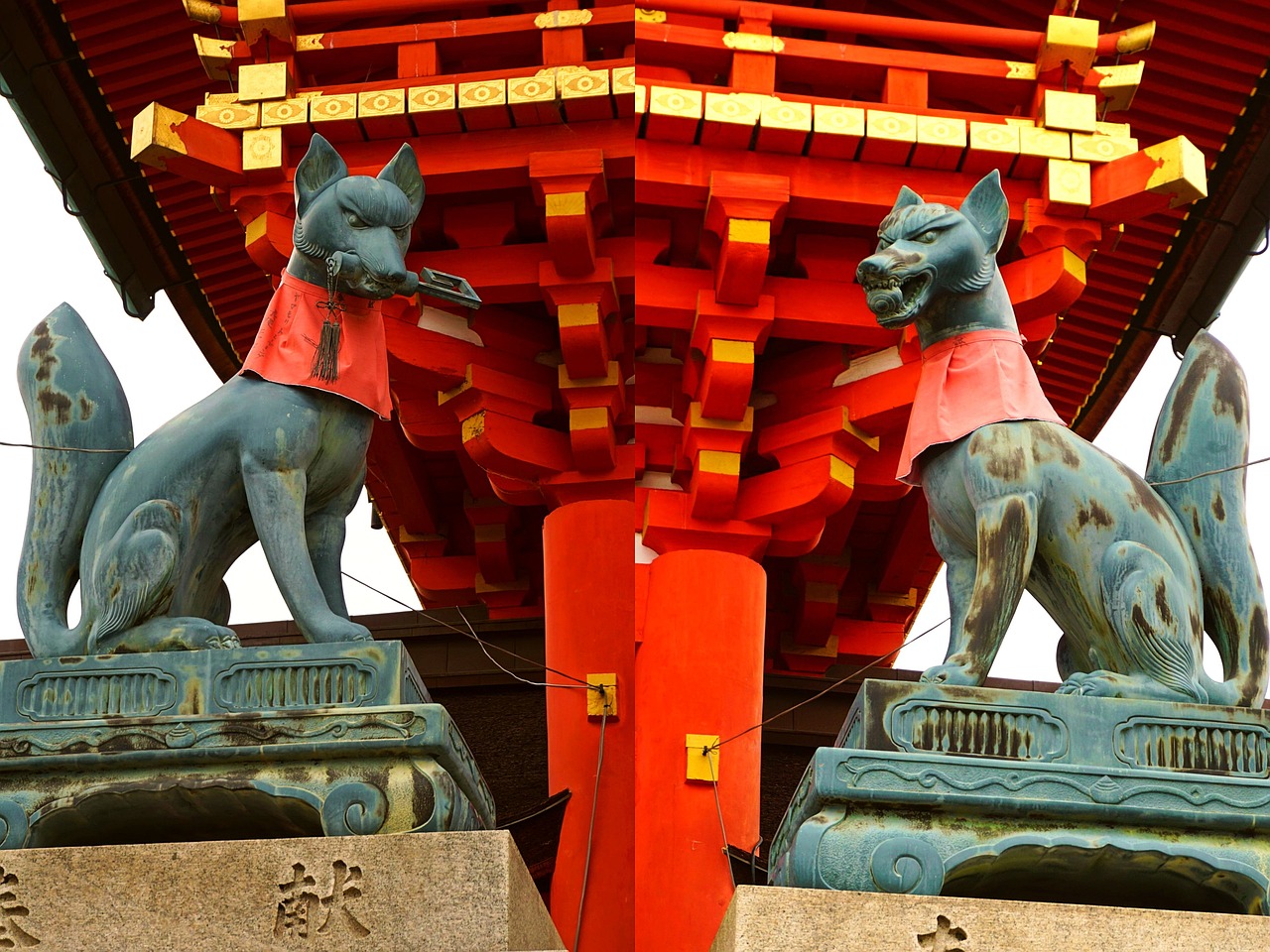
Visitors to Fushimi Inari Taisha are sure to be captivated by the countless fox statues that fill the shrine grounds. These fox statues are not mere decorations but embody the deep faith and mystical legends of Fushimi Inari Taisha. The foxes, known as Oinari-sama, are revered as messengers of Inari Ōkami, the deity of rice and agriculture. There are various theories about their origins, such as the resemblance of a fox's tail to a rich ear of rice or the fox's appearance and behavior suggesting a divine presence.
Additionally, the fox statues at Fushimi Inari Taisha display different expressions depending on the era in which they were made, reflecting the craftsmanship, sensibilities, and faith of the artisans of each period. These fox statues are more than just attractions; they convey the history and depth of faith at Fushimi Inari Taisha and serve as symbols of the shrine's mystical power, present in every corner of the grounds.
Sakuramon Gate
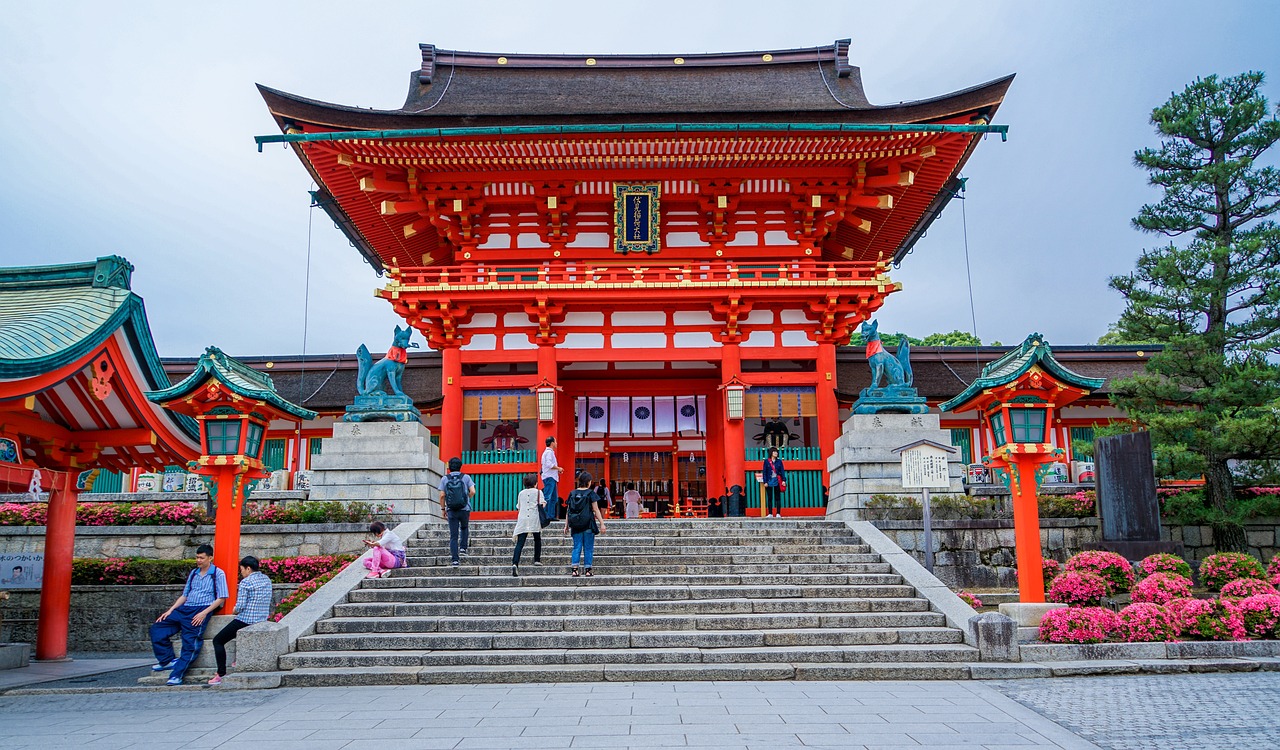
When visiting Fushimi Inari Taisha, take note of the magnificent Romon gate at its grand entrance. This gate is one of the largest within the shrine, measuring approximately 10 meters in width and 15 meters in height, making a striking impression. This imposing gate was constructed by Toyotomi Hideyoshi, one of the most famous warlords in Japanese history.
The story behind its construction is one of deep familial love. Hideyoshi sent a prayer to Fushimi Inari Taisha, wishing for the recovery of his ailing mother, Omandokoro. In his prayer, he promised to donate 10,000 koku of rice to the gods and Buddhas if his mother recovered. When his prayer was miraculously answered and his mother recovered, Hideyoshi expressed his gratitude by building this Romon gate.
Omokaru Stone
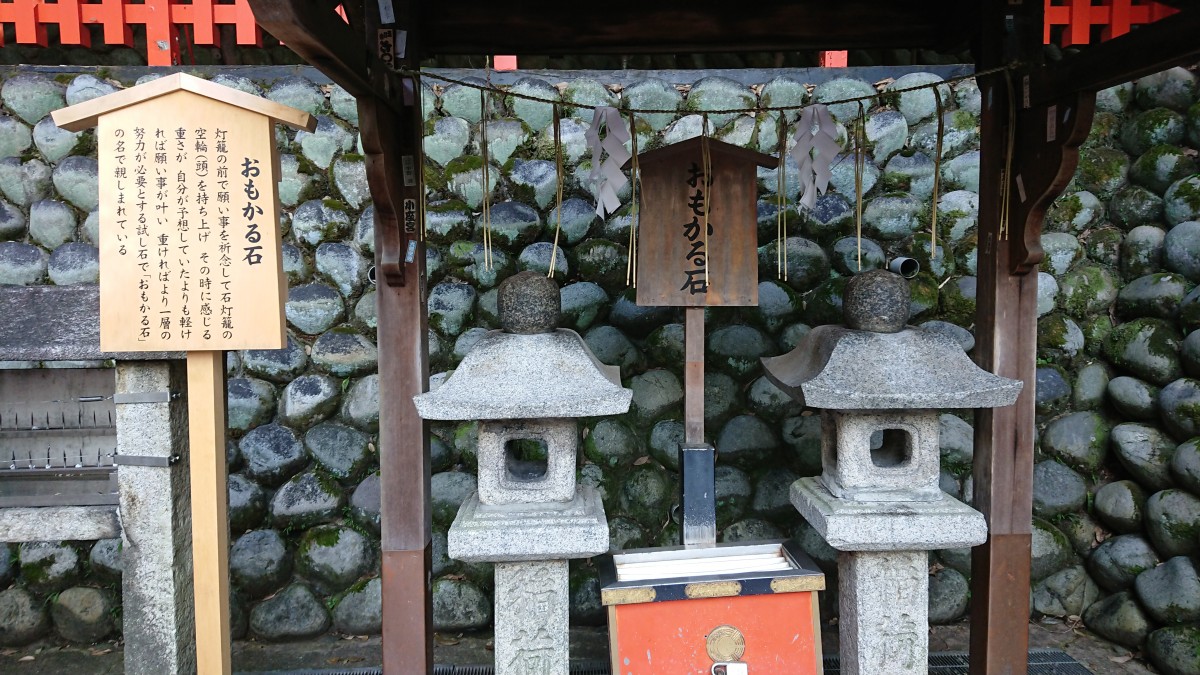
伏見稲荷大社には、数多くの見どころがありますが、その中でも特にユニークな体験ができるのが「おもかる石」です。千本鳥居を抜け、奥社奉拝所の右奥に進むと、低めの灯篭が2つ並んでいる場所を見つけることができます。この灯篭の上に置かれた石が、今回紹介する「おもかる石」です。
このおもかる石の前に立つと、訪れる人々は自分の願い事を心の中で念じます。願い事は、YesかNoで答えられるような内容が望ましいです。その後、石を持ち上げることによって、その願いが叶うかどうかを占うことができます。もし石を持ち上げた際に「軽い」と感じたなら、それは願いが叶う良い兆し。逆に「重い」と感じた場合は、願いが叶うのが難しいということを意味しています。
(Image Citation: 京都ECOトリップ)
Fushimi Inari Trivia
So far, we have explored the history and highlights of Fushimi Inari. Now, let's take a look at some trivia about Fushimi Inari. If you are planning to visit, this is a must-read!
Why are the Senbon Torii red?
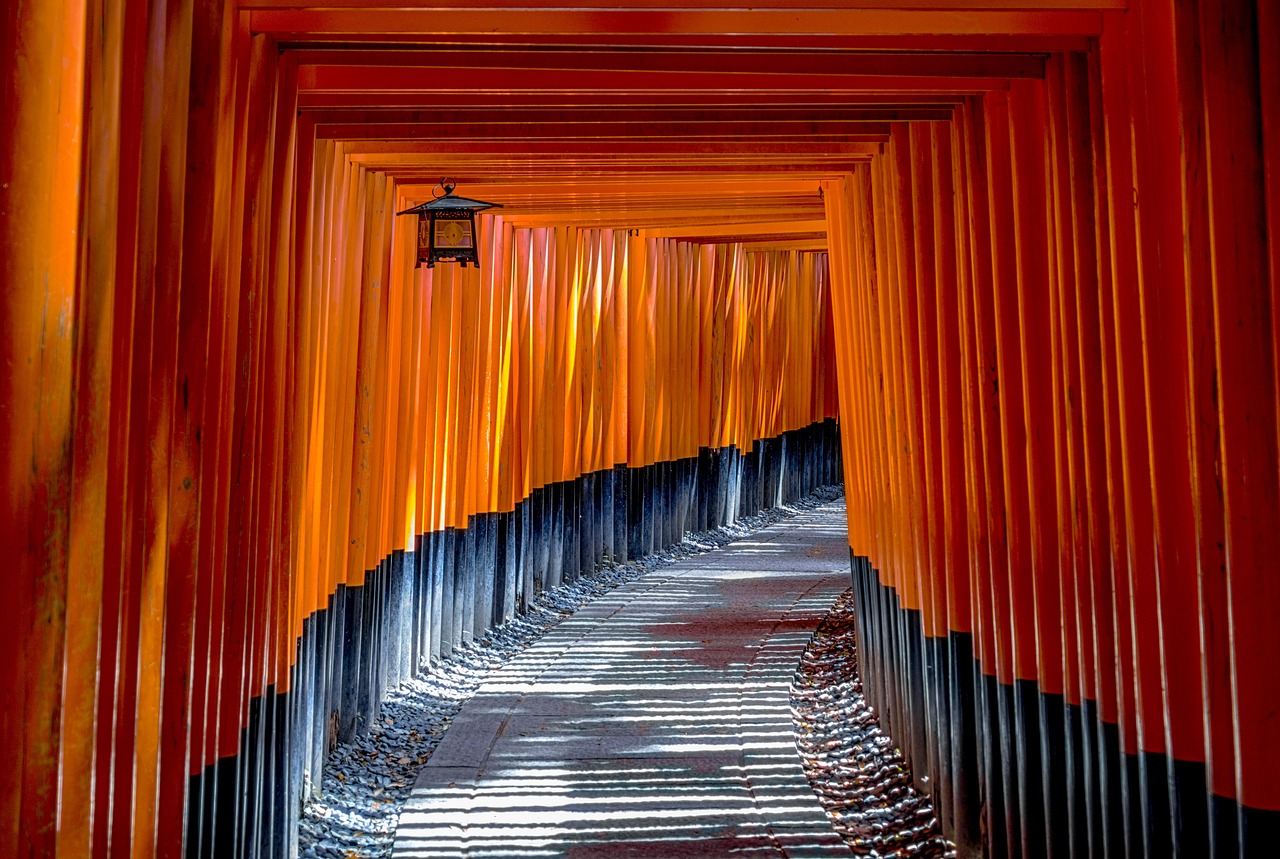
The Senbon Torii, an iconic feature of Fushimi Inari, is painted in vermilion, but why is that? In fact, vermilion has long been used in Japanese shrines and temples as a color that symbolizes protection against evil and sacred power. The raw material for vermilion, mercury, is said to have insecticidal and preservative effects. In the case of Inari shrines, this vermilion color holds even deeper meaning and is believed to symbolize the bounty of the five grains.
What do the rice, scroll, jewel, and key held by the fox statues mean?
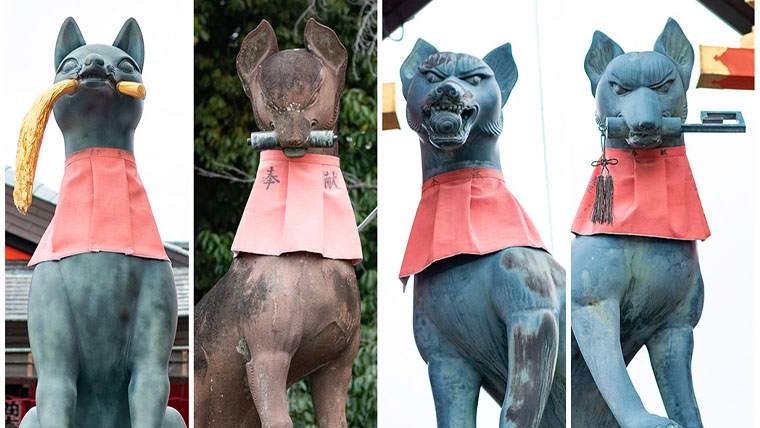
The countless fox statues at Fushimi Inari each hold something different in their mouths. There are four types of items: rice, a scroll, a jewel, and a key. Each of these items has its own meaning. The rice symbolizes the blessings of Inari Ōkami, the god of abundant crops. The scroll represents the divine virtues of Inari Ōkami, and is a symbol of the secret methods that can grant any wish. The jewel symbolizes the sacred spirit of the crops, representing the mystical divine virtues of Inari Ōkami. The key symbolizes the secret key to unlocking the treasure house of Inari Ōkami, representing the divine virtue of fulfilling one's wishes. Thus, the fox statues at Fushimi Inari hold items related to Inari Ōkami, the god of abundant crops.
(Image Citation: 京都って沼)
Kei no Sugi
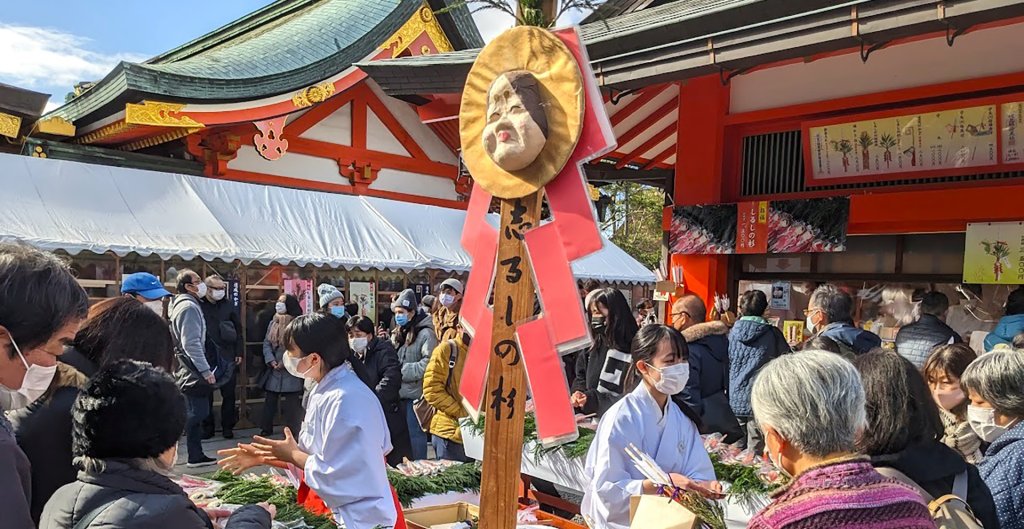
"Kei no Sugi" is a special sacred item given to worshippers only on the day of the Hatsuumataisai at Fushimi Inari Taisha. It is made from the branches of the sacred cedar tree of Inari. This tradition originates from the custom of ancient people who would break off a branch of cedar on the day of Hatsuumataisai and bring it home to impart its sacred power to their household. Today, instead of breaking off branches, worshippers receive cedar branches blessed by the shrine.
The custom of planting the cedar branch brought home in the garden or a flowerpot evolved into a tradition where people would predict their luck for the coming year based on whether the branch took root. If it took root, it was considered "fortunate," indicating the arrival of good luck. On the other hand, if it didn't take root, it was considered "unfortunate," and caution was advised. In modern times, "Kei no Sugi" is cherished by many worshippers as a talisman for prosperity in business and safety at home.
(Image Citation: 京都とっておきのプロジェクト)
A large number of Otsuka
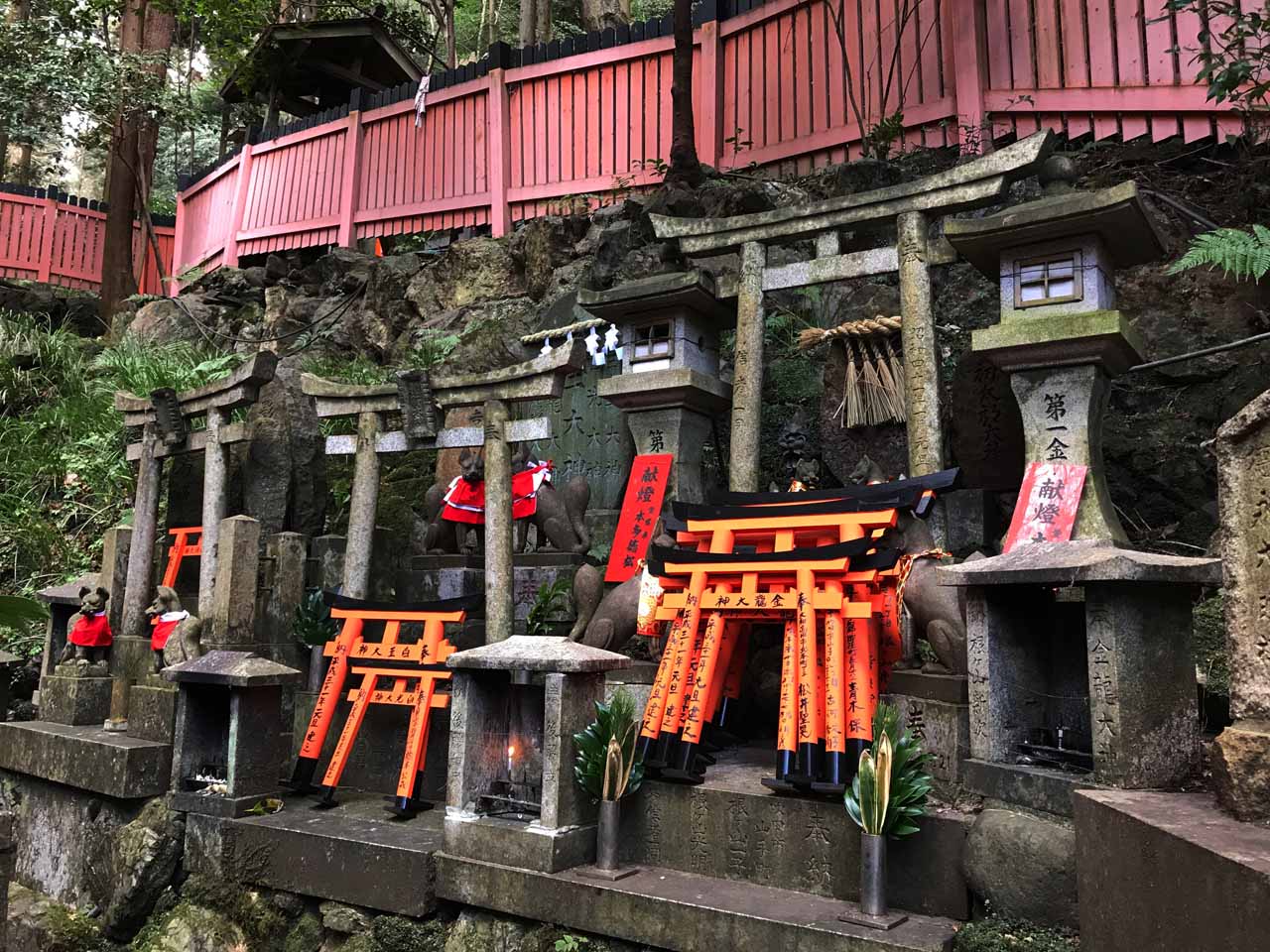
Beyond the magnificent Senbon Torii, Fushimi Inari has another hidden charm. Scattered throughout the mountains of Inariyama are countless small shrines called "Otsuka." These Otsuka exist separately from the subsidiary shrines of Fushimi Inari Taisha and represent a unique form of personal devotion.
Otsuka are small shrines installed by individual believers to enshrine the Inari deity as their personal guardian. These small shrines are adorned with miniature torii gates, piled up like votive sticks, with names given by the devotees. This custom reflects the sense of "my own Inari" for each worshipper, with the number, size, and manner of enshrinement of the torii varying according to the devotee's faith and financial means. Interestingly, the history of Otsuka is not very old, beginning around the mid-Meiji period. It then developed into its present form by the end of the Meiji period. Records show that there were about 2,500 Otsuka at the beginning of the Showa period, and their number exceeded 7,000 by the 1970s, with current estimates approaching 10,000. The sheer number of Otsuka demonstrates how deeply Inari worship has taken root among the common people.
Because of the overwhelming number of Otsuka, a database has recently been created, allowing visitors to search for them at rest areas and other facilities. This initiative not only makes it easier for visitors to find their dedicated Otsuka but also highlights the depth and breadth of Inari worship.
(Image Citation: ふらふら京都散歩)
Summary
How was it? This time, we have introduced the history, highlights, and trivia of Fushimi Inari. Fushimi Inari has a rich history that began with the legend of shooting rice cakes with an arrow, and has undergone various historical changes over the years. Knowing this historical background before visiting Fushimi Inari can allow you to enjoy it from a different perspective.
Our website also introduces various aspects of Japanese history and culture beyond Fushimi Inari. If you are interested, we would be delighted if you read our other articles as well!



